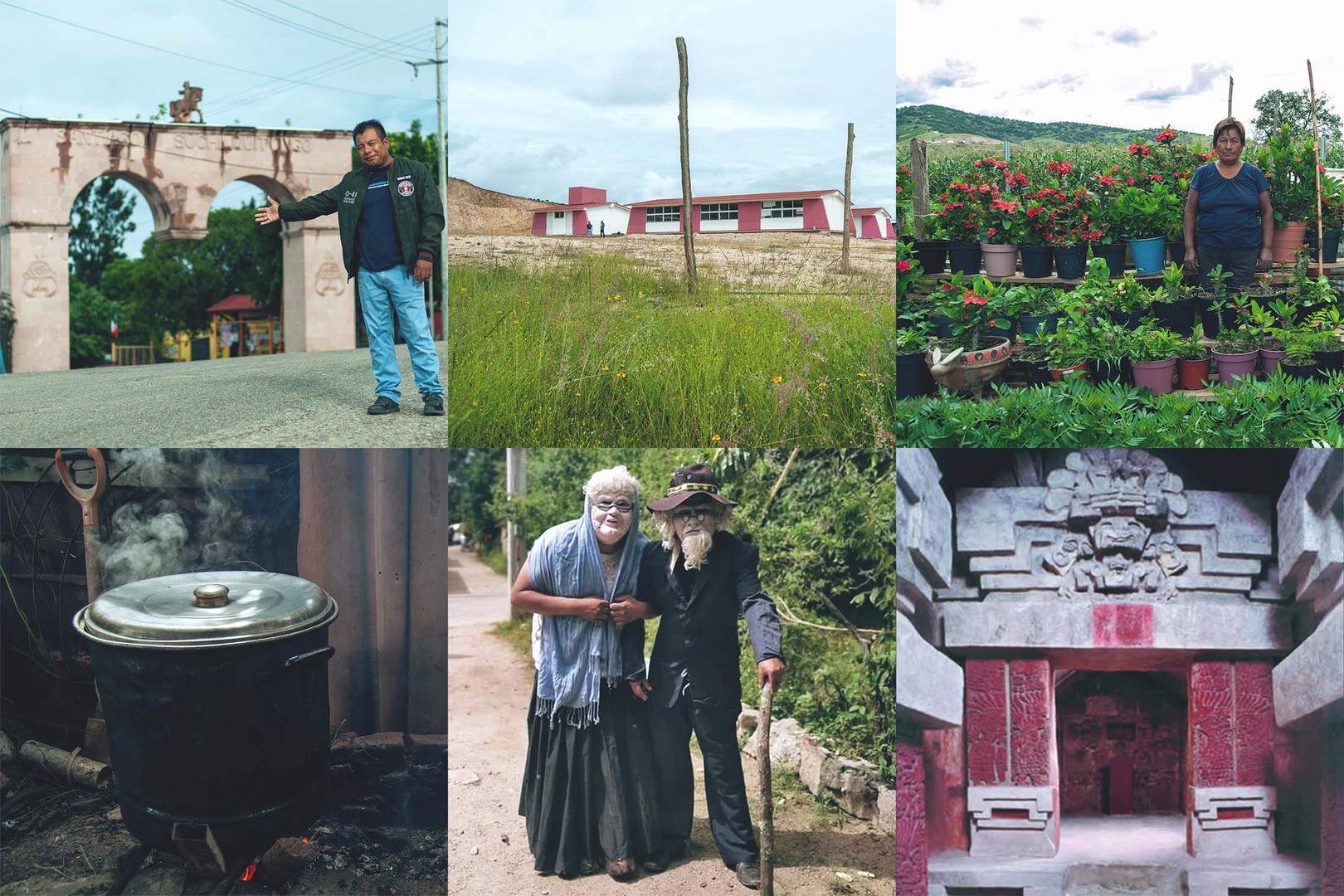Santiago Suchilquitongo is a community and municipality located in the Etla district of Oaxaca. Enoc Ramírez, Smith Assembly’s Global Innovator, is from “Suchil” (how the locals often refer to their town) and currently lives there with his family. For this blog post, he shares with us six things that make his community unique.
1. It’s home to skilled sculptors and deposits of pink quarry
One of the things that make Santiago Suchilquitongo unique are its pink quarry deposits. At the entrance to Suchil, you can find an arc made out of this material (which is quite rare in Oaxaca). The arc was made by some of the many local artisans who work with this beautiful type of pink granite. Compared to other quarries, such as the yellow quarry that’s also found in Oaxaca, pink quarry is highly resistant to sun, water, and inclement weather. In Suchilquitongo, there are pink quarry buildings which have existed for over 500 years and remained intact. Suchil is also home to great and renowned sculptors and artists of pink quarry, who have been in charge of repairing the largest convents in Oaxaca, including the Nochixtlán Convent and many other Dominican temples.
2. There are three different types of land tenure
In Suchilquitongo, there is private property, communal land, and ejidal lands. Private property is similar to other private properties that exist around the world, where a landowner has a title to a piece of land. Communal possession applies to shared lands within a community, such as rivers, hills, among others. In Suchilquitongo, most of the people live on communal land and people are given a certificate of possession for the land they inhabitat. Finally, ejido lands are communal lands owned by groups of people. Ejidos were created after the Mexican Revolution to give peasants possession of the land. Although originally they could not be sold, only inherited, recently there have been reforms such as the FANAR project that now allow their sale. Due to projects like FANAR, the cost of this type of land in Suchilquitongo has increased significantly.
3. People from Suchil are dedicated to agricultural work
Suchilquitongo is a town dedicated to agriculture. Families cultivate the traditional corn, beans, and squash. Around 20 years ago, the town started to produce other agricultural products, such as strawberries, raspberries, bell peppers, jalapeño peppers, and tomatoes. Currently, there are also several initiatives by people who seek to use organic fertilizers, such as bokashi, to produce organic products. With the production of organic products, and the use of green agricultural systems, many locals are looking to increase their profit margins from the extremely low prices for many regular products.
4. Local traditional cuisine includes moles, stews, maize, and other herbs
The leader of the cuisine from the central valleys of Oaxaca is undeniably black mole, which is consumed in Suchilquitongo along with others such as green mole and yellow mole. In addition to delicious moles, in Suchil the food considered most traditional is chicken stew. Amaranth products are also very popular. For example, boiled amaranth leaf is eaten in soups, and its seed is used to make milk, gruels, and traditional sweets. The base of our food is of course corn, which is often accompanied by beans and squash — all of which come directly from family farms. Other locally grown herbs such as chepiches, nopales, quelites, and wild blackberries are also eaten.
5. “Todosantos” or Day of the Dead is one of the most important celebrations
“La Fiesta de Todosantos” is how locals call in Spanish the Celebrations of the Day of the Dead. Local beliefs say that every year the dead have a permit to return to earth from the afterlife to visit their relatives in the world of the living. That’s why, on the eve of these dates, people prepare altars for their deceased loved ones with marigold flowers, bread, chocolate, and everything that the deceased liked. For example, if the deceased liked beer, they put beer on an altar or prepare their favorite meals to put on their altar.
The celebration is a multi-day holiday. Day 1 is for people who died in accidents. Day 2 is the day of “los angelitos” (little angels) which is to celebrate the children who died at an early age. Generally, on the day of los angelitos, people eat beans in a soup or ground refried beans to represent the traditional foods that are fed to babies. Then, on All Saints' Day, all the dead are celebrated. In Suchilquitongo, this day is celebrated with “comparsas” where young singers, musicians, and dancers dress in special costumes and masks. The function of the comparsas is to scare away the spirits that want to stay in the world of the living, which is why the dancers visit and enter every house to scare away the souls who do not want to go back to the afterlife.
6. There is a mostly unexplored archeological site in Suchilquitongo
Suchilquitongo is located right at the border of the Mixteca region and the Zapotec region, which are two of the largest indigenous groups of Oaxaca. The grandparents often say that the Garcés River, located in Suchilquitongo, divided the land of the Mixteca from the land of the Zapotec. The archaeological site is a beautiful ancestral construction that includes pyramidal buildings made of stone and stucco. Since pre-Hispanic times, the ancestors knew how to work incredibly well with stucco. On this site, called Cerro de la Campana, there is also a space for mesoamerican ball games. The main attraction of the site is a mortuary tomb, which is one of the largest in all of Oaxaca and painted with gorgeous red Zapotec ornaments.
